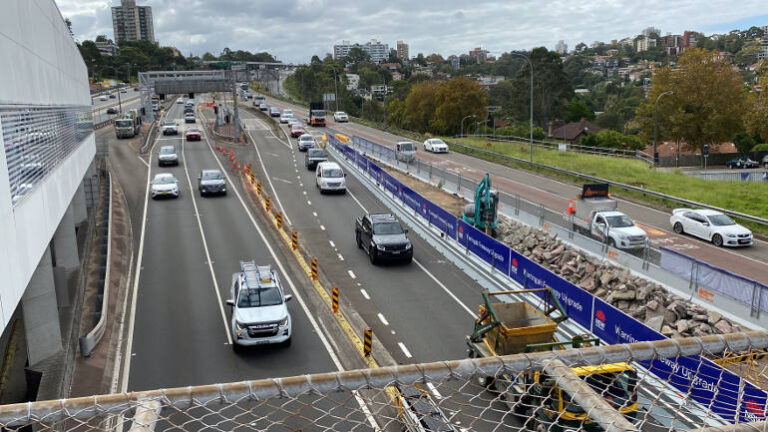An Australian-first sensor technology being trialled in Sydney will scan trucks in real time and use connected warning signage to divert drivers of overheight vehicles in an attempt to reduce incidents.
The system uses light detection and ranging (LiDAR) and automatic number plate recognition (ANPR) to provide drivers with an accurate real-time height reading on their vehicle, offering heavy vehicle drivers a chance to divert from their route to avoid incidents that could cause system wide disruptions to Sydney’s road network and damage to critical infrastructure.
This trial is part of the NSW Government’s ongoing crusade to reduce disruption from overheight incidents that has so far seen tunnel closure minutes in the Sydney Harbour Tunnel cut by 80 per cent.
The six-month trial will see trucks taller than four metres scanned as they pass under the sensor, and their height and number plate information will be gathered and instantaneously displayed on the overhead Variable Message Sign (VMS).
The first site is now live on the southbound lanes of the M1 Pacific Motorway at the Mount White Heavy Vehicle Safety Station which is operated by the National Heavy Vehicle Regulator (NHVR).
“The National Heavy Vehicle Regulator supports the investment by NSW Government into the use of new technologies like LiDAR scanning and ANPR software to help industry and ultimately drive greater safety and productivity outcomes,” said NHVR CEO, Sal Petroccitto.
“This system not only enhances road safety but also underscores our commitment to fostering innovation within the heavy vehicle industry.
“We are proud to continue our collaboration with Transport for NSW to reduce overheight incidents and ensure safer road transport for all.”
This crackdown, in combination with the work of the industry-wide Overheight Truck Taskforce launched in June 2023, has resulted in a dramatic reduction in overheight incidents in Sydney tunnels.
In the first six months of the taskforce’s operation (July to December 2023) there was a 67 percent decrease in total closure time minutes and a 32 per cent reduction in incidents, the lowest level in seven years. Over the same period, the Sydney Harbour Tunnel, the most disrupted route, saw an 80 per cent reduction in closure minutes and a 58 per cent reduction in incidents.
The reduction in incidents has continued across the network in 2024, with 26 recorded overheight incidents between January and June, which is 62 per cent fewer than the same period in 2023.
Peak body Road Freight NSW (RFNSW) has welcomed the trial of new sensor technology, following ongoing calls for an industry-led approach to addressing the overheight truck issue.
“This is fantastic news for our truckies and the wider community using NSW roads,” said RFNSW CEO, Simon O’Hara.
“From day one, when we experienced several overheight incidents last year, RFNSW called on the Government to engage with industry, to develop an awareness campaign and preventative measures which would better educate drivers about the varying height limits in tunnels across the Sydney road network, particularly for those new drivers, or for those from interstate or from outside of Sydney.
“Minister Graham listened and acted on our concerns and the establishment of the Overheight Trucks Taskforce has certainly demonstrated what has been collectively achieved in dramatically reducing the number of incidents involving overheight trucks.
“The new sensor technology is another positive tool in further preventing disruptions on the network and RFNSW looks forward to working with Transport for NSW, NSW Police, NSW Transport Workers Union, and the National Heavy Vehicle Regulator in keeping our roads safer and more productive for all users.”






